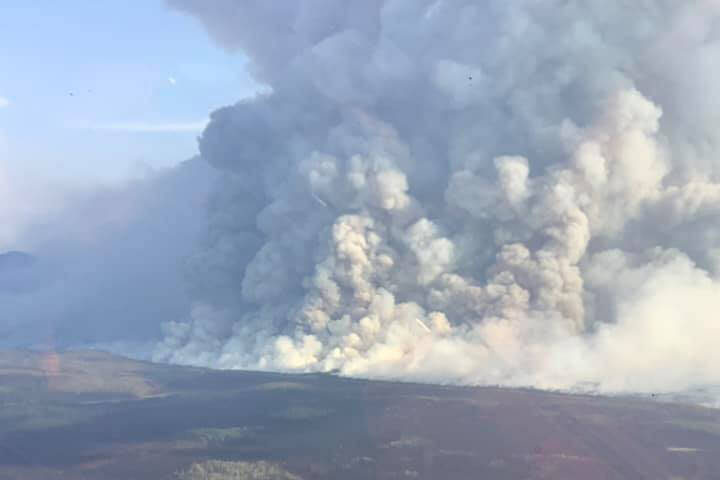By Maj. Gen. Torrence Saxe
Spring and summer across Alaska bring the much-anticipated recreation and subsistence activities that are vital to our way of life, but the longer days and warmer temperatures also bring the risk of flooding and wildland fires. While we are accustomed to these seasonal threats, the impact is no less devastating to those who are affected. When these events do occur, the Alaska Department of Military and Veterans Affairs is ready to provide a range of support and emergency assistance across the state.
Under the umbrella of the Department of Military and Veterans Affairs (DMVA), the Alaska National Guard, the Division of Homeland Security and Emergency Management (DHS&EM), the Alaska State Defense Force (ASDF), and Alaska Naval Militia work in lockstep planning, coordinating and training year-round so they can respond when the safety and livelihood of our neighbors are threatened by these seasonal disasters.
Breakup along the Yukon, Kuskokwim, Koyukuk, Tanana and other major rivers brings the threat of large ice jams that can cause flash flooding and ballistic ice conditions, threatening lives, homes and critical infrastructure. The DMVA stands ready to provide early warning, rapid response and agency coordination to the threat of ice jam and snowmelt flooding.
Each year, this team partners with riverine communities, regional agencies and the National Weather Service’s Alaska-Pacific River Forecast Center to conduct a program known as River Watch. River Watch teams include a local pilot with experience flying the rivers, an emergency management specialist, and a hydrologist. The team flies over major rivers “low and slow” to provide surveillance, reconnaissance and early warning as the ice begins to break up and move downriver.
Should an ice jam form, River Watch teams provide flood warnings to communities above and below the jam so they can take the proper precautions. The DMVA, and DHS&EM in specific, partners with tribal health organizations like Tanana Chiefs Conference and Yukon-Kuskokwim Health Corporation to facilitate evacuations and sheltering should the need arise.
The Alaska National Guard has helicopters and trained rescue and medevac crews ready to support the Alaska State Troopers if flooding events create the need for rescues or evacuations. This year from April 30 to May 12, the Alaska Army National Guard has a total of seven Black Hawk helicopters training across western Alaska, giving the River Watch team additional sets of eyes and rescue capabilities during this potentially volatile breakup season.
Once the snow and ice are gone, the threat of wildland fires and their impact to Alaskan communities cannot be overstated, as an average of more than one million acres are burned each year across the state.
The DMVA provides essential support to the Alaska Department of Natural Resources, Division of Forestry, which is Alaska’s lead wildland fire suppression agency. This collaborative effort includes multiple state and federal agencies and is aggressively focused on detecting and containing fires that have the potential to impact homes or infrastructure.
The DMVA prepares for fire season every year and stands ready to support our firefighters with aerial firefighting capability via Alaska Army National Guard Black Hawk and Chinook helicopters. We have the ability to rapidly mobilize Alaska National Guardsmen, Alaska State Defense Force and Alaska Naval Militia personnel to support logistics, provide transportation and assist with traffic management. They are trained, equipped and prepared to respond to breakup flooding or wildland fires, and many other emergencies. We strive continuously for interagency coordination between local, state and federal agencies. This is how we train, because this is how we must operate during an emergency if we are to respond quickly and effectively.
The men and women of the Department of Military and Veteran Affairs, both military and civilian, take their responsibility to serve Alaskan communities seriously. Our mantra is Team Alaska — we are here to help Alaskans and our communities.
For those interested in serving and giving back to their community, I encourage them to check out the many opportunities across the DMVA. We are always looking for hard-working, value-driven Alaskans to join our team to serve and protect the people across the state.
By Maj. Gen. Torrence Saxe is commissioner of the Alaska Department of Military and Veterans Affairs and Adjutant General of the Alaska National Guard.

